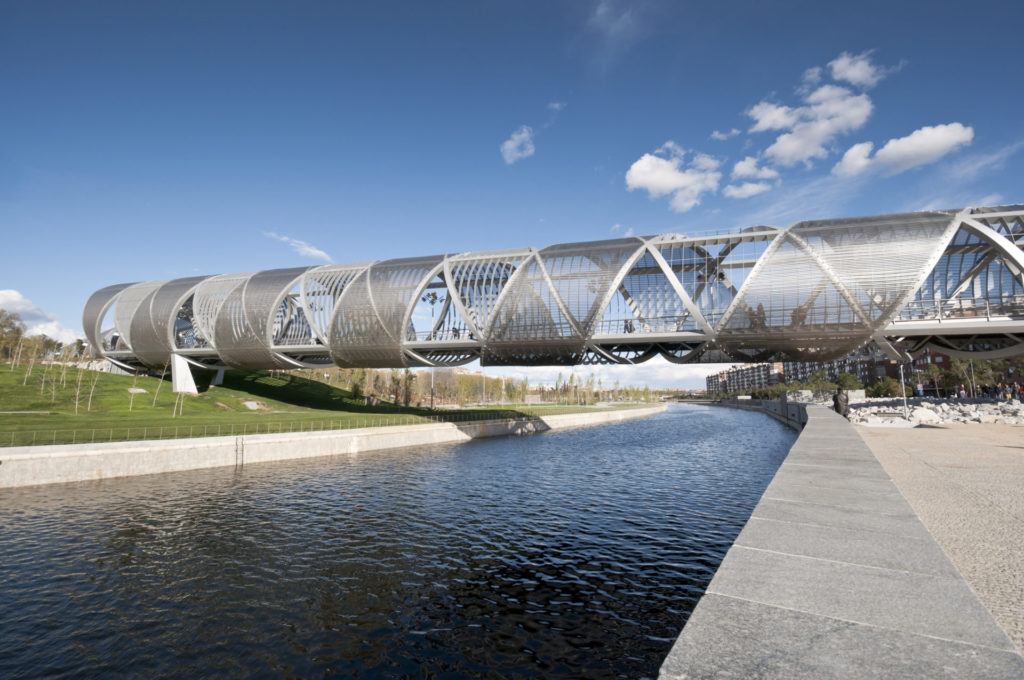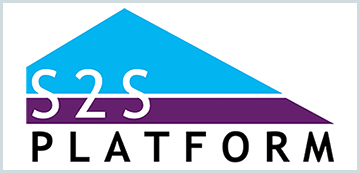heading
What we do
The vision of the Action Platform for Source-to-Sea Management is a world in which land, freshwater, coastal and marine resources are managed holistically, balancing benefits for the environment, communities, and economy – from source to sea.

To fulfil this, our mission is to enable sustainable development across the land-freshwater-marine continuum through supporting the adoption and implementation of a source-to-sea approach to management at regional, national, and sub-national levels.

This is the S2S Platform
The Action Platform for Source-to-Sea Management is a network of organizations committed to promoting, implementing, and building expertise on source-to-sea management.
About the Platform
Strategic aims
With the Strategy 2021-2025, we set our sights on advancing the implementation of the source-to-sea approach and application of source-to-sea perspectives. The aim is to achieve the ambitions of the 2030 Agenda by influencing policy makers, assisting practitioners, and growing understanding on the needs for and benefits of source-to-sea action.
Strengthening partnership across actors and initiatives
Through individual and joint activities, we will engage our extensive networks and connect with relevant initiatives promoting source-to-sea policies and practice; thereby building understanding, commitment and action to address source-to-sea issues.
We recognize that achieving our vision relies on using our collective and individual strengths. We commit to working together as a Platform to forge new knowledge, expand our influence and increase source-to-sea action.
As partners, we work together to strengthen partnership by:
- Building a stronger and united S2S Platform through regular engagement activities that increase connectivity, collaboration and knowledge sharing among partners and our extended community.
- Attracting strategic partners and supporters from across the source-to-sea continuum with increasing engagement from land-based and marine actors as well as actors who can support local implementation such as the private sector and civil society.
- Growing a vibrant source-to-sea community that expands source-to-sea action by leveraging our collective resources, networks and expertise.
- Securing a stable source of funding for the S2S Platform Secretariat and its activities.
The S2S Platform has active, engaged partners representing the diversity of actors needed to fulfil our vision. This is supported by:
- Participation in the S2S Platform has expanded to include a diversity of sectors and regions, transboundary organizations and actors along the land-freshwater-marine continuum.
- Partners take an active, catalytic role in delivering the four strategic aims, realizing and contributing to greater progress than would have been possible as individual organizations.
- Partners connect regularly through S2S Platform partner engagement activities.
- Partners regularly share source-to-sea news to be disseminated by the platform and disseminate platform news through their own communications networks.
- Multi-year funding for the S2S Platform Secretariat and its activities is secured.
Growing understanding
We will substantiate the need for and benefits of the source-to-sea approach and increase the understanding of source-to-sea linkages by gathering and sharing knowledge, building an evidence-base gained through research, and developing guidance on addressing source-to-sea challenges.
We recognize that source-to-sea action starts with understanding the benefits of addressing development challenges from source to sea, building a strong knowledge base of its merits and challenges, and identifying barriers to implementation as well as the means to overcome them.
As partners, we work together to grow understanding by:
- Developing knowledge resources that help overcome barriers to source-to-sea management and guide implementation of the source-to-sea approach in a variety of contexts and development challenges.
- Building the case and evidence-base for a source-to-sea approach as a necessary and credible response to rising and persistent development priorities at regional, national and sub-national levels by collecting and analyzing cases, research, data and lessons learned from implementation in different contexts, as well as strengthening the understanding of trade-offs when linking across the land-freshwater-marine continuum.
The S2S Platform establishes a global source-to-sea knowledge hub. This is supported by:
- The Platform has a rich catalogue of case studies, data and experiences from partner led initiatives, demonstrating applicability of the approach under a variety of circumstances, including the means to overcome barriers to implementation.
- The Platform has produced reports and policy products demonstrating applicability of a source-to-sea approach in addressing persistent and rising issues, including the climate crisis and post-pandemic recovery.
Building commitment for source-to-sea action
We will inform and influence global, regional and transboundary agenda setting and the priorities of governments, financiers, private sector and civil society to effectively address source-to-sea issues in policy and practice.
We recognize that getting more source-to-sea action on the ground requires commitments from governments, financiers, private sector and civil society to address development challenges from source to sea.
As partners, we build commitment by:
- Supporting regional cooperation between freshwater and marine actors to address the transboundary nature of source-to-sea systems.
- Ensuring source-to-sea perspectives are well featured and advocated for in relation to key issues such as achieving the 2030 Sustainable Development Agenda, delivering on the Paris Agreement and the post-pandemic recovery through our active participation in prominent global, regional and transboundary policy processes.
- Engaging high-level and influential spokespersons to ensure that source-to-sea perspectives are championed and well considered in global, regional and transboundary processes.
- Raising awareness of the benefits of source-to-sea action, and its required enabling environment through dialogue with national and sub-national actors to encourage its uptake in policy and practice.
- Working with financiers, such as development banks, to incentivize financial mechanisms and investment tools that guide the consideration of upstream-downstream linkages and the viewpoints of stakeholders along the land-freshwater-marine continuum.
Source-to-sea perspectives hold a permanent place in the global agenda as a solution to rising and persistent development challenges. This is supported by:
- Source-to-sea, upstream-downstream linkages and/or the land-freshwater-marine continuum are considered and referenced within key global, regional or transboundary agenda setting processes.
- National level processes reflect the need for a source-to-sea approach to address current and future development challenges such as climate risk
mitigation and adaptation, including mainstreaming in NDCs and NAPs. - Key donors or financing institutions address the need for source-to-sea management in strategies and lending criteria.
Taking action on the ground
We stimulate source-to-sea action by raising awareness from grassroots to national levels, building local and regional capacity and demonstrating its benefits in addressing development challenges through practical application.
We recognize that getting source-to-sea action on the ground relies upon increasing demand from grassroots to national levels, building local capacity through providing training, tools and guidance and demonstrating benefits in addressing development challenges from source to sea.
As partners, we support action on the ground by:
- Raising awareness of the benefits of source-to-sea management in addressing the trade-offs that can arise from upstream-downstream linkages, contributing to an increase in demand from grassroots to national levels for taking a source-to-sea approach to addressing local priorities.
- Building local capacity among public, private and civil society actors to address upstream-downstream linkages and facilitating cross-sectoral coordination.
- Increasing local and regional expertise in implementing the source-to-sea approach through interactive workshops and other training modalities, enlarging the overall number of source-to-sea practitioners.
- Demonstrating the benefits of the source-to-sea approach to management by applying it in response to local priorities in a variety of contexts.
Expertise is built and source-to-sea management is applied in six continents. This is supported by:
- Local and regional capacity is built through capacity development activities, contributing to an increased awareness among upstream and downstream stakeholders about the benefits of a source-to-sea approach, building implementation demand from the grassroots to national levels and ensuring that expertise is readily available to drive implementation.
- Knowledge resources are developed to support the adoption of the source-to-sea approach at regional, national and sub-national levels.
- A strong case for source-to-sea approaches to management has been made through projects conducted in different regions and addressing
a range of source-to-sea issues.
2025 Goals
- The S2S Platform will have active, engaged partners representing the diversity of actors needed to fulfil our vision.
- The S2S Platform establishes a global source-to-sea knowledge hub.
- Source-to-sea perspectives hold a permanent place in the global agenda as a solution to rising and persistent development challenges.
- Expertise is built and source-to-sea management is applied in six continents.
Achievements
Since its formation in 2014, the S2S Platform has successfully highlighted the importance of a systems approach to ecosystem management through the development of the source-to-sea conceptual framework, analyzing the linkages between SDG 6 and 14.
It has also developed key guidance for implementers through Implementing the Source-to-Sea Approach: A Guide for Practitioners, and for its application in Source-to-Sea Framework for Marine Litter Prevention: Preventing Plastic Leakage in River Basins.
The Platform has seen increasing recognition of the need for a source-to-sea approach in key international processes, financing, and operational strategies. The S2S Platform has grown into a network of more than 30 committed partners from around the world and across sectors. The greatest strength of the S2S Platform continues to be the diversity and conviction of the partner network.